The CTO You Can Afford: Fractional Leadership That Delivers Full-Size Results
Why smart companies are ditching the full-time CTO model—and seeing better results with flexible technology leadership.

Technology leadership isn't just important—it's existential. Yet not every company needs or can afford a full-time Chief Technology Officer. This reality has given rise to a powerful alternative: CTO services.
The concept is simple but revolutionary. Companies gain access to seasoned technology executives without the overhead of a permanent C-suite hire. They tap into strategic guidance when needed, scaling expertise alongside business demands. It's the democratization of technology leadership.

But what exactly does this arrangement look like in practice? How do businesses determine if they need fractional technology leadership versus building an in-house team? And why are even well-established enterprises increasingly turning to this model?
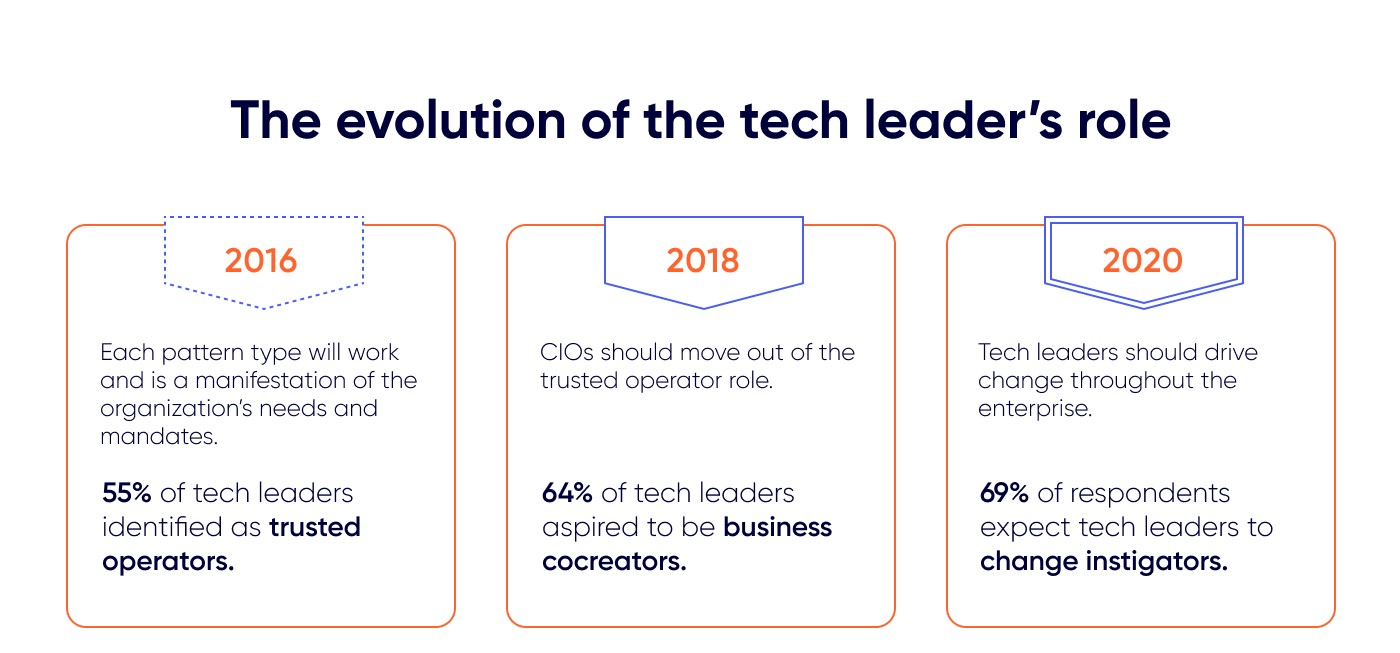
The Evolution of Technology Leadership
Technology leadership has transformed dramatically over the past two decades. Gone are the days when a CTO simply managed infrastructure and kept systems running. Today's technology leaders are business strategists first, technologists second.
The modern CTO sits at the intersection of business strategy and technological innovation. They translate business objectives into technology roadmaps, identify competitive advantages through digital transformation, and ensure technology investments deliver measurable ROI. This evolution reflects a fundamental shift in how businesses view technology—not as a cost center, but as a strategic differentiator.

Small and mid-sized businesses face a particular challenge. They need sophisticated technology leadership to compete, but often can't justify the expense of a full-time executive commanding a salary well into six figures. The gap between need and affordability created the perfect conditions for outsourced CTO services to flourish.
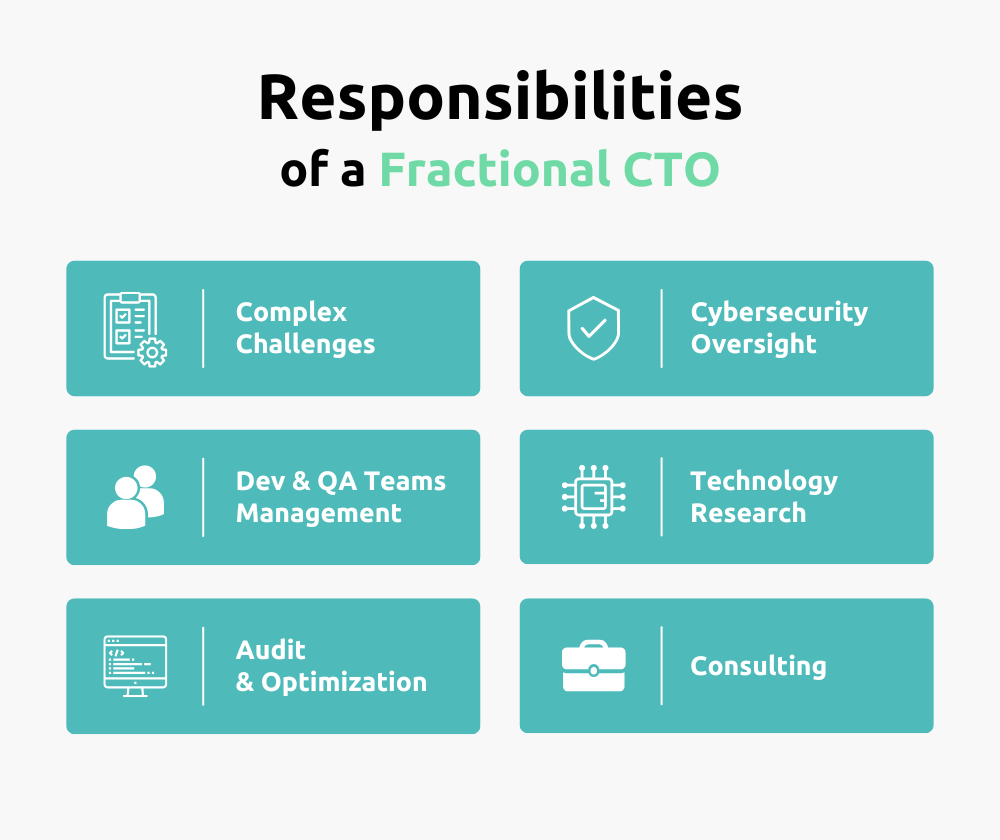
What Are CTO Services?
CTO services provide businesses with access to experienced technology executives on a flexible basis. These arrangements come in several flavors, each designed to address specific business needs.
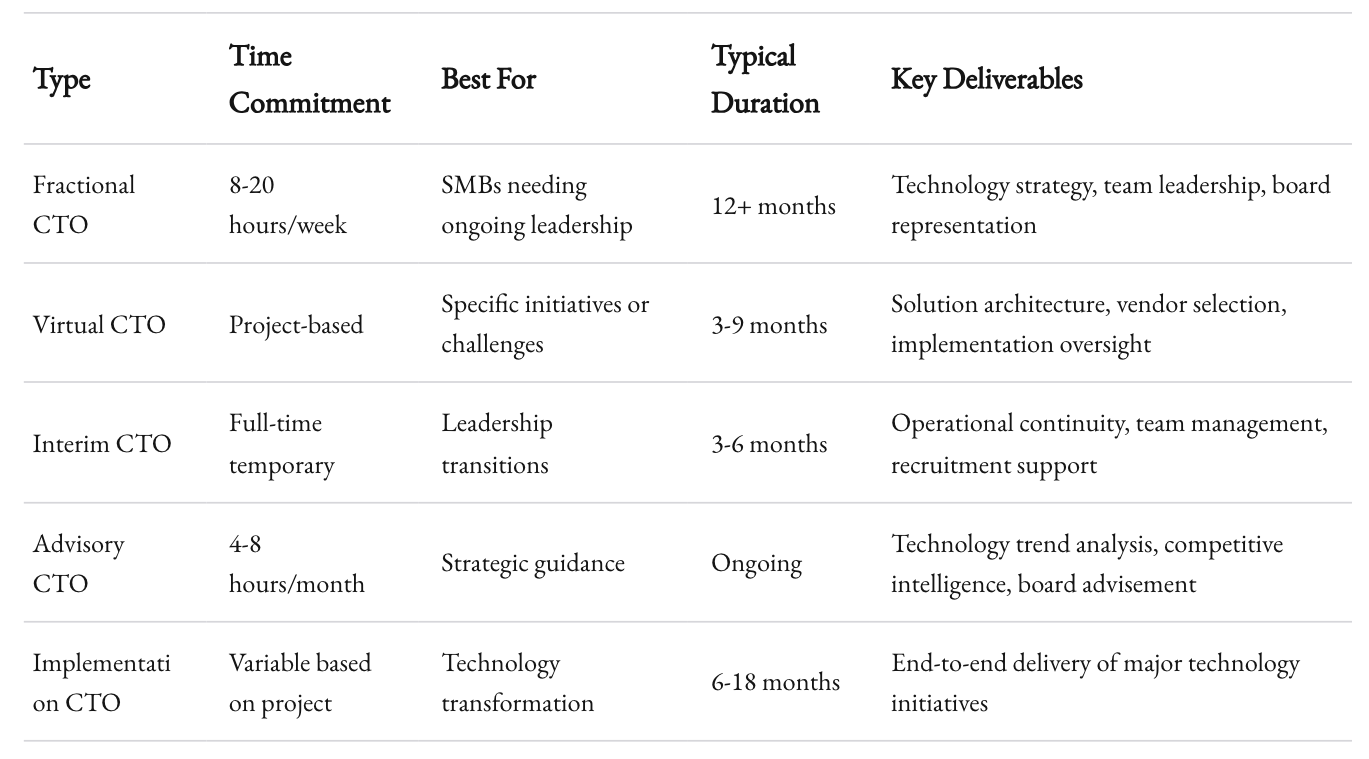
Fractional CTOs work part-time for multiple companies, typically dedicating a set number of hours per week or month to each client. They attend leadership meetings, develop technology strategies, and provide ongoing guidance—essentially functioning as a part-time executive team member.
Virtual CTOs operate more as consultants, brought in for specific projects or challenges. They might help select a new technology platform, oversee a digital transformation initiative, or evaluate cybersecurity posture. Their engagement has a defined scope and timeline.
Interim CTOs fill temporary leadership gaps. When a company loses its technology leader unexpectedly or needs specialized expertise during a critical transition, an interim CTO steps in to maintain continuity and guide the organization through the change.
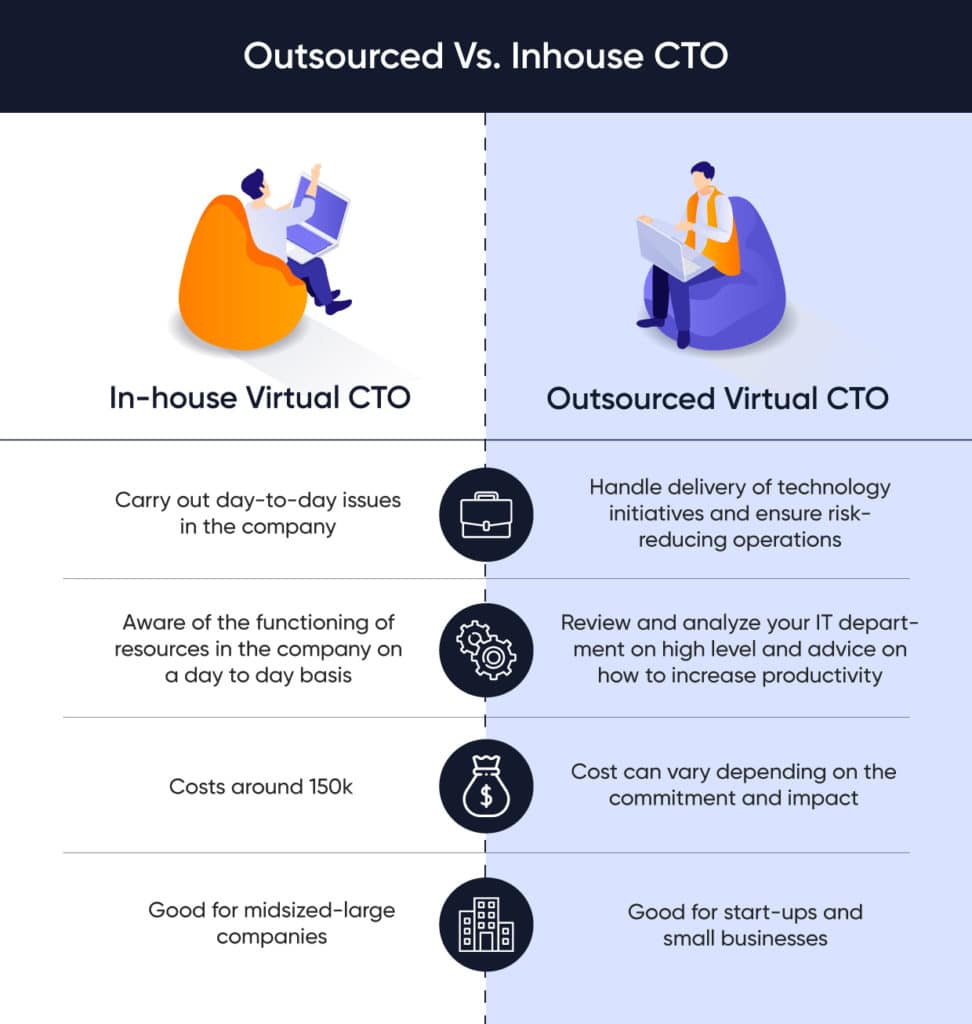
Advisory CTOs provide high-level guidance to executives or boards without direct operational involvement. They offer perspective on technology trends, competitive threats, and strategic opportunities, often serving on advisory boards or providing periodic consultation.
The common thread? Flexibility and expertise without the commitment of a full-time hire.
When Do Companies Need CTO Services?
Identifying the right moment to bring in external technology leadership requires understanding both business needs and market realities. Several scenarios typically trigger the search for CTO services.
Startups and early-stage companies often need sophisticated technology guidance but lack resources for a full-time executive. A fractional CTO can help establish technology foundations, make critical early architecture decisions, and build scalable systems without breaking the budget. They prevent costly mistakes that could require painful rewrites later.
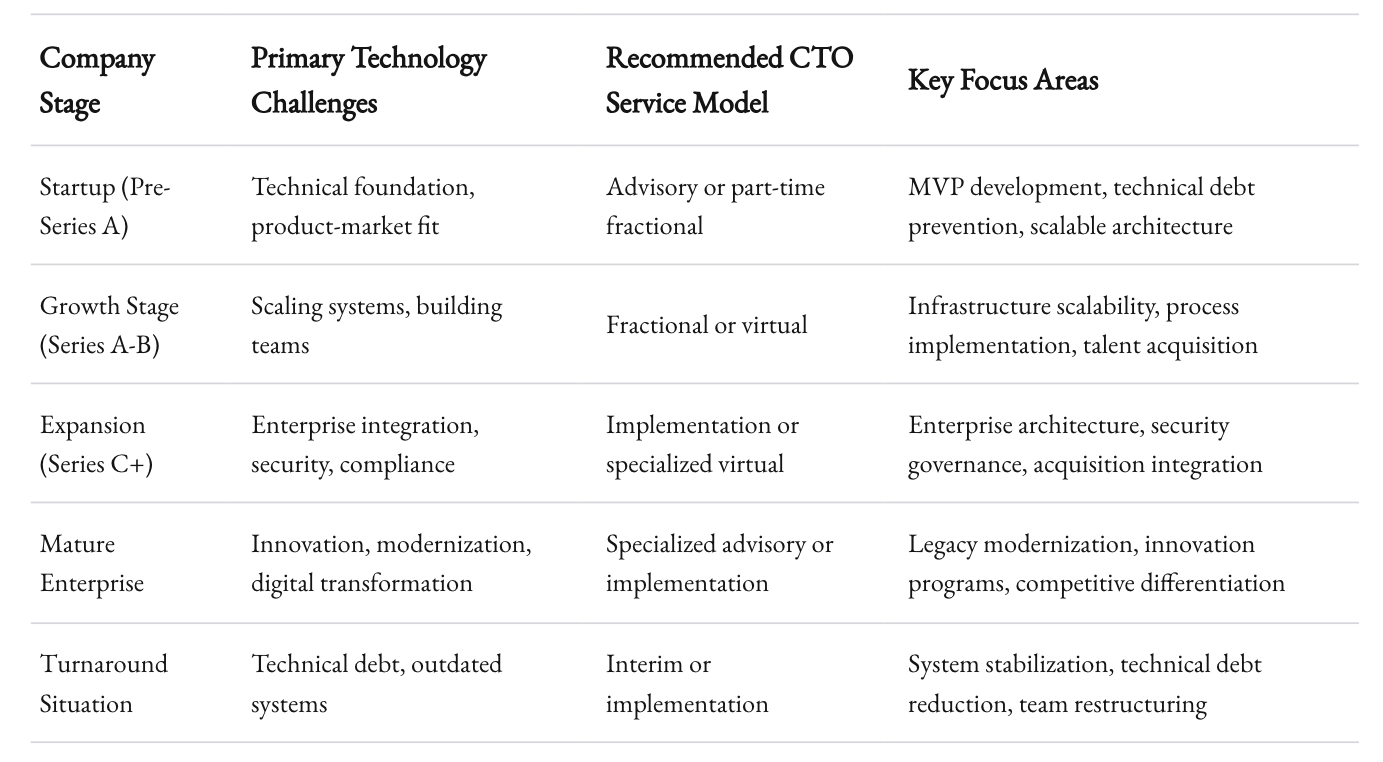
Growth-stage companies face different challenges. As they scale, their technology needs become more complex. Systems that worked for a dozen employees buckle under the weight of rapid expansion. A virtual or fractional CTO can guide this transition, ensuring technology scales alongside the business without becoming a bottleneck.
Companies undergoing digital transformation benefit tremendously from experienced outside perspective. An external CTO brings fresh eyes and broad experience across multiple industries and transformation journeys. They've seen what works and what doesn't, helping companies avoid common pitfalls while accelerating their evolution.
Even enterprises with established technology teams sometimes need specialized expertise for specific initiatives. Cloud migration, AI implementation, or cybersecurity overhauls benefit from leaders who have successfully navigated these challenges multiple times across different organizations.

The Benefits Beyond Budget
While cost savings often initiate the conversation around CTO services, the benefits extend far beyond financial considerations. Companies discover advantages they hadn't anticipated when they first explored the model.
External technology leaders bring diverse experience across industries, company sizes, and technology stacks. This cross-pollination of ideas introduces fresh perspectives that can break through organizational inertia. A CTO who has worked with dozens of companies recognizes patterns, anticipates challenges, and applies lessons learned across contexts.
Objectivity represents another significant advantage. Internal technology leaders sometimes develop blind spots or become entrenched in "the way we've always done things." External CTOs evaluate technology decisions without emotional attachment or political considerations. They ask uncomfortable questions and challenge assumptions that internal teams might take for granted.
The network effect cannot be overstated. Experienced technology executives bring vast professional networks built over decades. They know which vendors deliver, which technologies are emerging, and which talent might fit specific needs. This network becomes an extension of the company's resources, opening doors that would otherwise remain closed.
Perhaps most importantly, external CTOs accelerate execution. They've implemented similar initiatives multiple times, allowing them to compress learning curves and avoid common mistakes. This acceleration can mean the difference between market leadership and playing catch-up.
The 1985 Approach: Beyond Traditional CTO Services
At 1985, we've evolved the traditional CTO services model to address a critical gap we observed in the market. While strategic guidance is valuable, execution ultimately determines success. Our approach combines high-level technology leadership with hands-on implementation capabilities.
This hybrid model emerged from a simple observation: strategy without execution is merely theory. Companies need both visionary leadership and practical implementation to succeed in today's technology landscape. By providing both elements through a coordinated team, we eliminate the handoff problems that plague many technology initiatives.
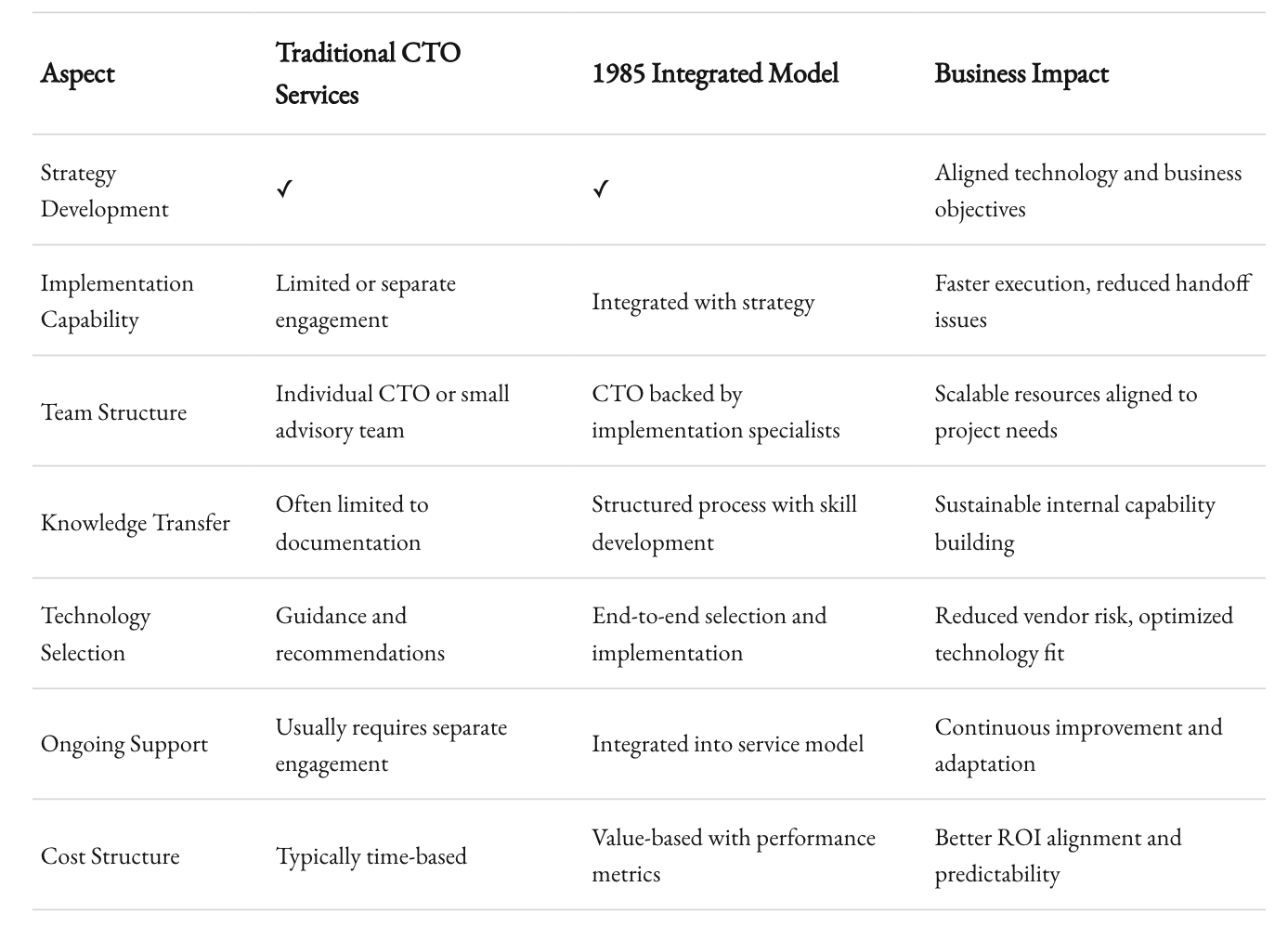
Our clients gain access not just to a seasoned technology executive, but to a complete ecosystem of specialized talent that can be deployed as needed. This model scales both up and down based on project requirements, providing maximum flexibility without sacrificing continuity or institutional knowledge.
The approach particularly resonates with mid-market companies navigating critical growth phases. These organizations need sophisticated technology capabilities to compete with larger enterprises but lack the resources to build comprehensive in-house teams. Our model provides enterprise-grade technology leadership and implementation without enterprise-level overhead.
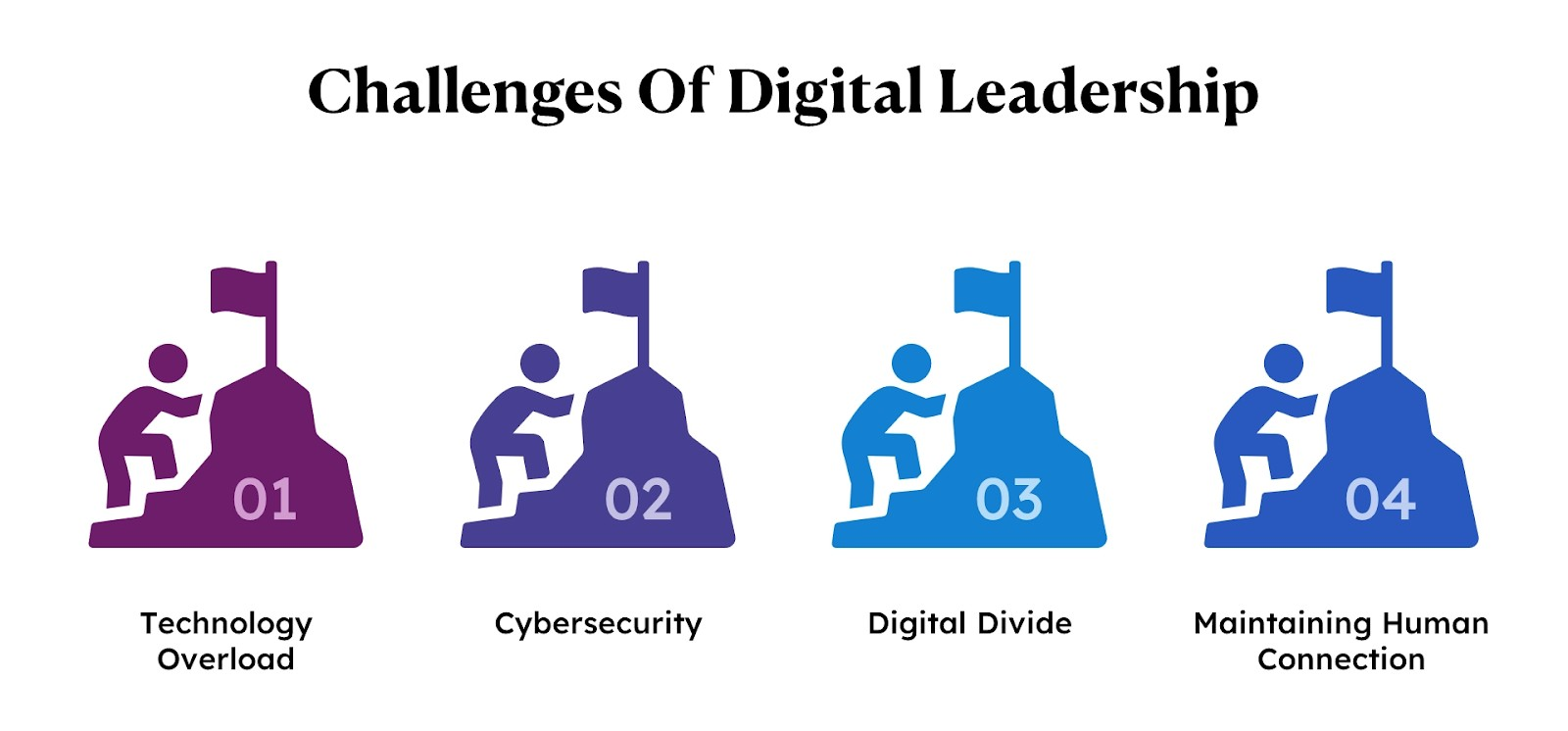
Common Challenges and How to Address Them
Despite its advantages, the outsourced CTO model isn't without challenges. Understanding these potential pitfalls helps companies implement the model more effectively.
Knowledge transfer represents a significant concern. Companies worry that critical institutional knowledge will walk out the door when the engagement ends. Effective documentation, involvement of internal team members, and structured knowledge sharing processes mitigate this risk. The best external CTOs make knowledge transfer an explicit deliverable from day one.
Cultural alignment can prove challenging when bringing in outside leadership. Technology decisions don't exist in a vacuum—they must align with company values, work styles, and business priorities. Successful engagements require CTOs who invest time understanding company culture and adapting their approach accordingly, rather than forcing standardized methodologies that might clash with established norms.
Balancing strategic vision with practical realities requires finesse. External CTOs must develop technology strategies that reflect business objectives while acknowledging resource constraints. This balance prevents the creation of beautiful roadmaps that never see implementation due to budget or capability limitations.
Communication complexity increases with distributed leadership. External CTOs must establish clear communication channels, decision-making frameworks, and escalation paths. Regular structured check-ins, transparent documentation, and defined roles prevent confusion about who owns which decisions.

Measuring Success: KPIs for Outsourced Technology Leadership
How do you know if your CTO services engagement is delivering value? Establishing clear metrics from the outset creates accountability and demonstrates return on investment.
Strategic alignment indicators measure how effectively technology initiatives support business objectives. These might include the percentage of technology projects directly tied to strategic goals, business stakeholder satisfaction with technology direction, or the ratio of strategic versus maintenance technology work.
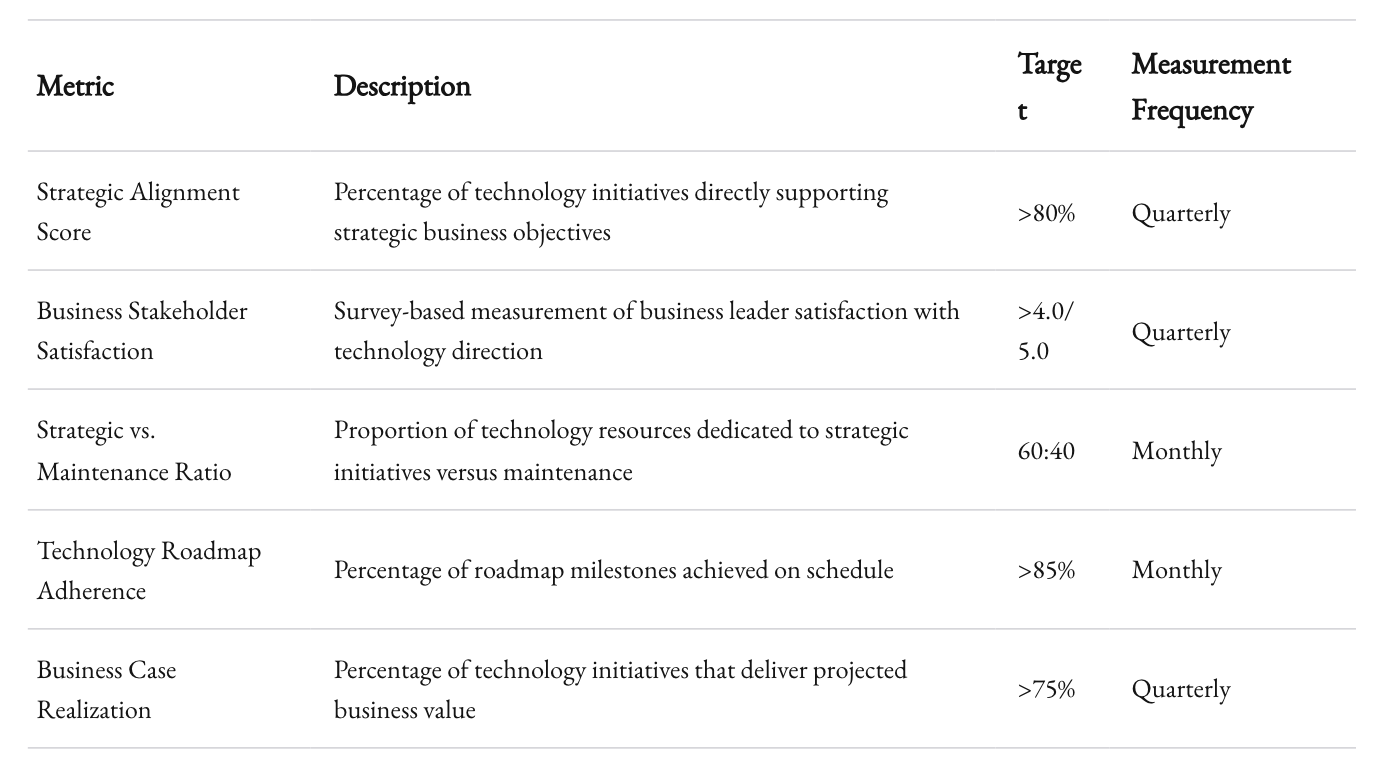
Operational efficiency metrics evaluate improvements in technology execution. These include on-time project delivery rates, system reliability improvements, and reductions in technical debt. Effective CTO leadership should drive measurable improvements in how technology functions day-to-day.
Financial impact remains the ultimate measure. This includes both cost savings (reduced infrastructure costs, maintenance efficiencies, avoided hiring expenses) and revenue enablement (new products launched, market expansion supported, customer experience improvements). Sophisticated CTO services providers track and report these metrics proactively.
Perhaps most importantly, knowledge transfer and capability building should show measurable progress. The goal isn't perpetual dependency but rather building internal capabilities over time. Metrics might include the number of internal team members trained, documentation quality and completeness, or reduced reliance on external guidance for routine decisions.

The Future of Technology Leadership
The CTO services model continues to evolve as technology and business landscapes transform. Several trends are shaping its future trajectory.
Specialization is accelerating. General technology leadership remains valuable, but we're seeing increasing demand for domain-specific expertise. Companies seek CTOs with deep experience in particular industries (healthcare, financial services) or technologies (AI/ML, IoT, blockchain). This specialization delivers more immediate value in complex domains where general technology knowledge proves insufficient.
Integration with broader business strategy is deepening. Tomorrow's outsourced CTOs won't just lead technology—they'll help shape comprehensive business strategy. The artificial separation between "business" and "technology" continues to dissolve as digital capabilities become fundamental to every aspect of operations. This evolution requires CTOs with stronger business acumen and strategic thinking capabilities.
Hybrid models combining strategic leadership with implementation capabilities are gaining traction. Companies increasingly recognize that the gap between strategy and execution creates significant risk. Models that bridge this gap by providing both elements in a coordinated fashion deliver more consistent results than traditional consulting approaches.
Global talent access is expanding possibilities. Remote work normalization has removed geographic constraints on technology leadership. Companies now access global talent pools for CTO services, finding specialized expertise regardless of location. This globalization creates both opportunities and challenges as cultural differences and time zones add complexity to already nuanced relationships.
Is Outsourced CTO Leadership Right for Your Business?
Determining whether external technology leadership fits your organization requires honest assessment of several factors.
Current technology maturity provides the starting point. Organizations with minimal existing technology capabilities often benefit most from external leadership. They avoid costly mistakes during foundational stages and establish scalable practices from the beginning. Conversely, companies with sophisticated technology operations might need more specialized external guidance focused on particular initiatives rather than comprehensive leadership.
Growth trajectory shapes technology leadership needs. Rapidly scaling companies face different challenges than stable organizations. The former need technology leadership that can anticipate future requirements and build systems that accommodate explosive growth. The latter might focus more on optimization, modernization, and extracting maximum value from existing investments.
Internal capabilities and gaps determine what external resources will provide maximum impact. Companies with strong technical teams but weak strategic direction benefit from high-level guidance. Those with clear vision but execution challenges need leadership that can translate strategy into action. Honest capability assessment prevents investing in redundant expertise while neglecting critical gaps.
Budget realities cannot be ignored. While external CTO services typically cost less than full-time executives, they still represent significant investment. Companies must align expectations with available resources, potentially starting with limited engagement that expands as value is demonstrated.
Cultural considerations matter tremendously. Some organizations thrive with external guidance, embracing fresh perspectives and challenging questions. Others resist outside influence, particularly around technology decisions that affect daily work. Understanding your culture's receptiveness to external leadership prevents relationship friction that undermines potential value.
Strategic Advantage Through Flexible Leadership
Technology leadership has become too important to compromise, yet too expensive for many companies to maintain full-time. CTO services bridge this gap, democratizing access to sophisticated technology guidance that was once available only to the largest enterprises.
The model continues evolving beyond simple cost savings toward delivering strategic advantage through flexibility, specialized expertise, and accelerated execution. Companies that leverage this model effectively gain the benefits of world-class technology leadership aligned precisely with their specific needs and growth stage.
As technology becomes increasingly central to competitive advantage across industries, access to sophisticated technology leadership will separate market leaders from followers. The outsourced CTO model provides a powerful mechanism for companies of all sizes to harness this advantage without the overhead of traditional executive hiring.
The question isn't whether your organization needs strategic technology leadership—in today's digital economy, that's a given. The question is how to structure that leadership to maximize impact while optimizing resources. For a growing number of forward-thinking companies, the answer lies in the flexibility, expertise, and execution focus that modern CTO services provide.
At 1985, we're proud to be at the forefront of this evolution, helping companies transform technology from a cost center to a strategic differentiator through our unique combination of leadership and implementation capabilities. The future belongs to organizations that harness technology most effectively—and strategic technology leadership is the key that unlocks that potential.



